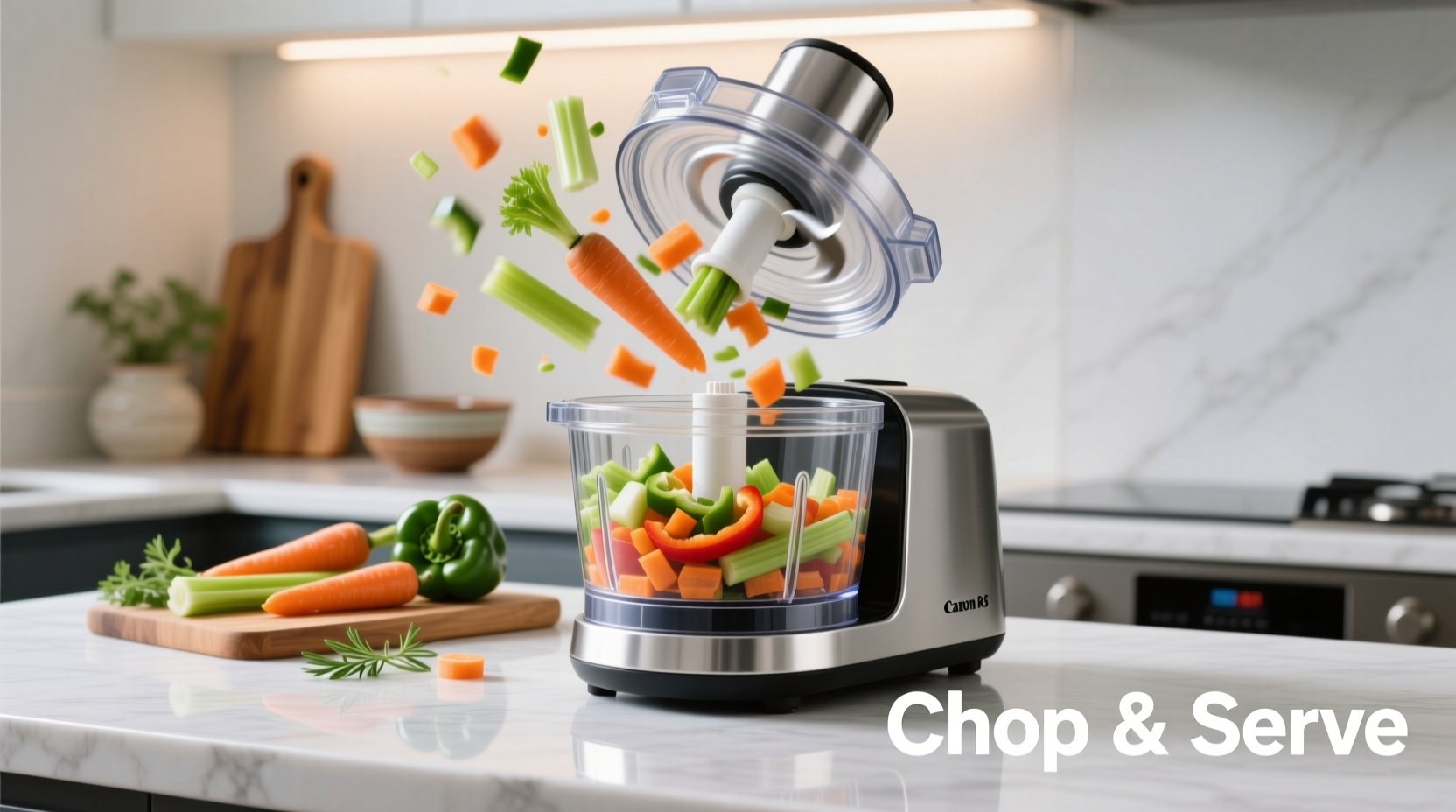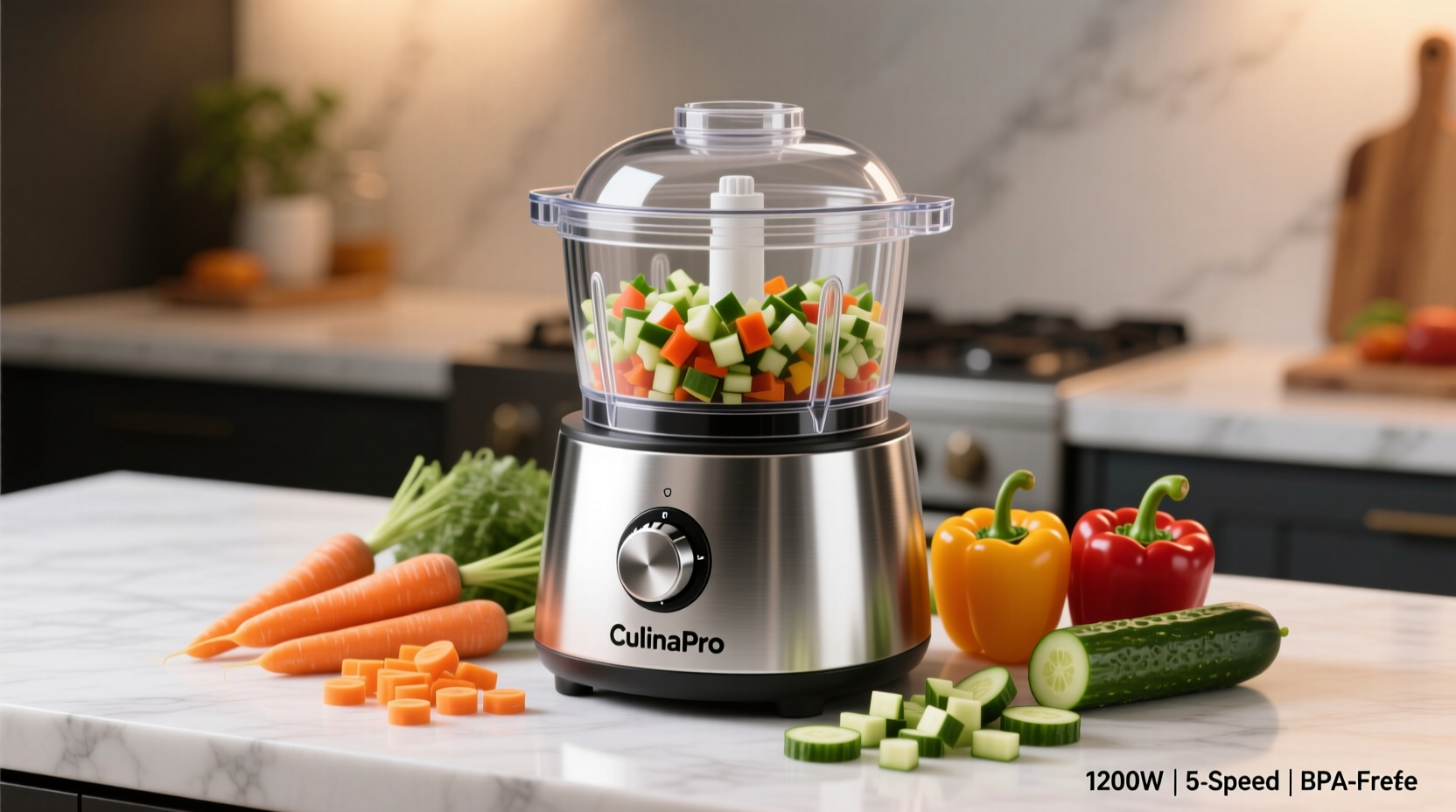Why Your Kitchen Needs This Workhorse Appliance
When you're standing at your counter with a mountain of vegetables to chop or dough to knead, a food processor transforms hours of labor into minutes of effortless preparation. Professional chefs and home cooks alike rely on this appliance for consistent results that manual preparation simply can't match. But what exactly makes a food processor different from your blender or mixer? Let's break down what this essential kitchen tool can do for you.
Core Capabilities: What a Food Processor Actually Does
Food processors handle tasks that would otherwise consume significant kitchen time. The standard S-blade attachment efficiently chops onions in seconds without tears, while the shredding disc creates perfect coleslaw in moments. Unlike blenders that create liquid emulsions, food processors maintain ingredient integrity while achieving uniform results.
Consider these everyday applications where food processors shine:
- Dough preparation - Kneads bread or pastry dough to perfect elasticity without overworking
- Vegetable prep - Uniformly slices potatoes for gratins or shreds cabbage for slaw
- Sauce creation - Makes pesto, hummus, or salsa with controlled texture
- Nut processing - Creates nut butters or finely ground crumbs
- Soup bases - Purees roasted vegetables for silky smooth soups
| Task | Food Processor | Blender | Manual Method |
|---|---|---|---|
| Chopping vegetables | Uniform pieces in seconds | Pulverizes into liquid | Inconsistent, time-consuming |
| Making pie dough | Perfect texture in 30 seconds | Too powerful, creates paste | Requires skill, risk of overworking |
| Shredding cheese | Consistent shreds, no waste | Not suitable | Uneven, tiring |
| Making nut butter | Smooth texture with control | Requires liquid, inconsistent | Impractical |
Evolution of Food Processing Technology
The modern food processor emerged from French culinary innovation in the 1970s, but its capabilities have evolved dramatically. Early models offered basic chopping functions, while today's processors feature precision engineering that handles delicate tasks like julienning vegetables or creating fine pastry dough without overheating ingredients.
According to the USDA Food Safety and Inspection Service, proper food preparation techniques significantly reduce cross-contamination risks. Food processors with dedicated bowls for different tasks help maintain kitchen hygiene by minimizing contact between raw and prepared ingredients.
When a Food Processor Becomes Essential
Certain cooking scenarios practically demand a food processor. Meal preppers processing weekly vegetable batches find the time savings substantial. Those with arthritis or limited hand mobility discover food processors provide independence in the kitchen. Bakers creating multiple pie crusts appreciate the consistent results impossible to achieve manually.
However, food processors aren't universally necessary. If your cooking primarily involves simple salads and pre-cut ingredients, the counter space might be better used elsewhere. The appliance shines brightest when you regularly prepare dishes requiring precise chopping, consistent shredding, or dough preparation.

Practical Usage Tips from Professional Kitchens
Professional chefs maximize food processor efficiency through specific techniques. Always use the pulse function for controlled chopping rather than continuous processing. Chill blades before working with fats to prevent melting. Process ingredients in batches rather than overfilling the bowl for consistent results.
Consumer Reports testing shows that proper maintenance extends appliance life significantly. Regularly check blade sharpness and replace when food begins tearing rather than cutting cleanly. Never submerge the motor base in water—wipe with a damp cloth instead. These practices ensure your food processor remains a reliable kitchen companion for years.
Integrating Your Food Processor Into Daily Cooking
Start with simple tasks that demonstrate immediate value: chop onions for weekly meal prep, make homemade breadcrumbs from stale bread, or create uniform vegetable slices for roasting. As you become comfortable, explore more advanced applications like making fresh pasta dough or emulsifying mayonnaise.
Remember that food processors complement rather than replace all kitchen tools. For small quantities, a chef's knife often provides better control. For liquid-heavy tasks, your blender remains superior. Understanding these boundaries helps you use each tool effectively.
Frequently Asked Questions
Can a food processor replace my blender?
No, food processors and blenders serve different purposes. Food processors excel at handling solid ingredients with precise texture control, while blenders create smooth liquid emulsions. Attempting to make smoothies in a food processor yields inconsistent results, just as trying to chop vegetables in a blender creates mush.
What size food processor do I need for a family of four?
A 9-12 cup capacity handles most family cooking needs. Smaller 3-4 cup models work for dips and small-batch tasks, while larger capacities accommodate meal prep batches. Consider your most frequent tasks—those making frequent dough or large vegetable batches benefit from 11-14 cup models.
Why does my food processor make my vegetables watery?
Over-processing releases natural juices from vegetables. Use the pulse function with short bursts rather than continuous processing. Chill vegetables before processing, and avoid overfilling the bowl. For watery vegetables like tomatoes, remove seeds and excess liquid before processing.
How do I clean a food processor properly?
Never submerge the motor base in water. Disassemble components immediately after use. Wash bowls and blades in warm soapy water or dishwasher (check manufacturer instructions). For stubborn residue, fill the bowl halfway with warm water and a drop of soap, then pulse briefly before washing. Always dry components thoroughly before storage.











 浙公网安备
33010002000092号
浙公网安备
33010002000092号 浙B2-20120091-4
浙B2-20120091-4